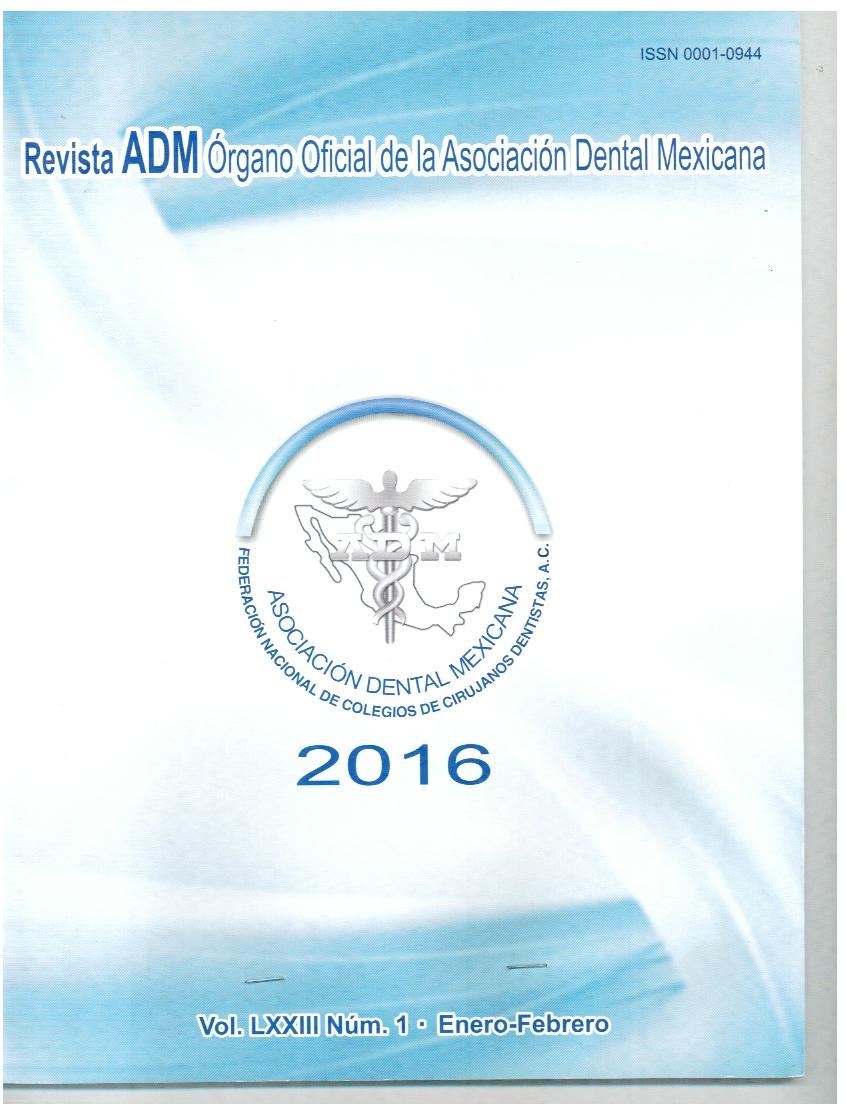Crónicas de autores
Roberto Méndez Maya *
Autor invitado por SIIC
Es un experimento in vitro en donde se trata de simular las condiciones clínicas que se tendrán en una cavidad para recibir una incrustación cerámica, sin y con tratamiento de bases cavitarias,obteniendo resultados para beneficio del odontologo en genera
MAYOR RESISTENCIA A LA FRACTURA DE INCRUSTACIONES CERÁMICAS DE PIEZAS DENTALES CON BASES CAVITARIAS COMBINADAS
La resistencia a la fractura de inlays cerámicas de disilicato de litio es mayor en cavidades sin base cavitaria.
*Roberto Méndez Maya
describe para SIIC los aspectos relevantes de su trabajo
RESISTENCIA A LA FRACTURA IN VITRO DE INCRUSTACIONES CERÁMICAS USANDO DOS MATERIALES COMO BASES CAVITARIAS
Revista ADM Órgano Oficial de la Asociación Dental,
LXXIII(3):139-143 May, 2016
Esta revista, clasificada por SIIC Data
Bases, integra el acervo bibliográfico
de la
Biblioteca Biomédica (BB) SIIC.
Institución principal de la investigación
*Universidad Autónoma de Tamaulipas, Tampico, México
Imprimir nota
Referencias bibliográficas
1. Carrillo SC. Revisión de los principios de preparación de cavidades. Extensión por prevención o prevención de la extensión. Revista ADM LXV:263-71, 2008.
2. Koushyar KJ. Recomendaciones para la selección del material cerámico libre de metal, de acuerdo a la ubicación de la restauración en la arcada. Int J Odontostomatol 4:237-40, 2010.
3. Magne P, Schlichting LH, Paranhos MP. Risk of onlay fracture during pre-cementation functional occlusal tapping. Dent Mater 27:942-7, 2011.
4. Bergman MA. The clinical performance of ceramic inlays. Aust Dent J 44:157-68, 1999.
5. Esquivel-Upshaw JF, Anusavice KJ, Yang MC, Lee RB. Fracture resistance of all ceramic and metal-ceramic inlays. Int J Prosthodont 14:109-14, 2001.
6. Soares CJ, Martins LR, Fonseca RB, Correr-Sobrinho L, Fernandes Neto AJ. Influence of cavity preparation design on fracture resistance of posterior Leucite-reinforced ceramic restorations. Prosthet Dent 95:421-9, 2006.
7. Morimoto S, Fioranelli V, Martins A, Newton S, Gil C. Fracture strength of teeth restored with ceramic inlays and overlays. Braz Dent J 20:143-8, 2009.
8. Dalpino PH, Francischone CE, Ishikiriama A, Franco EB. Fracture resistance of teeth directly and indirectly restored with composite resin and indirectly restored with ceramic materials. Am J Dent 15:389-94, 2002.
9. Santos MJ, Bezerra RB. Fracture resistance of maxillary premolars restored with direct and indirect adhesive techniques. J Can Dent Assoc 71:585, 2005.
10. Desai PD, Das UK. Comparison of fracture resistance off teeth restored with ceramic inlay and resin composite: An in vitro study. Indian J Dent Res 22:877, 2011.
11. Banditmahakun S, Kuphausuk W, Kanchanavasita W, Kuphasuk C. The effect of base materials with different elastic moduli on the fracture loads of machinable ceramic inlays. Oper Dent 31:180-7, 2006.
12. Isenberg BP, Essig ME, Leinfelder KF. Three years clinical evaluation of CAD/CAM restorations. J Esthet Dent 4:173-6, 1992.
13. Magne P. Composite resins and bonded porcelain: The postamalgam era? J Calif Dent Assoc 34:135-47, 2006.
14. Habekost LV, Camacho GB, Demarco FF, Powers JM. Tensile bond strength and flexural modulus of resin cements- influence on the fracture resistance of teeth restored with ceramic inlays. Oper Dent 32:488-95, 2007.
15. Moscovich H, Roeters FJ, Verdonschot N, Kanter RJ, Creugers NH. Effect of composite basing on the resistance to bulk fracture of industrial porcelain inlays. J Dent 26:183-9, 1998.
